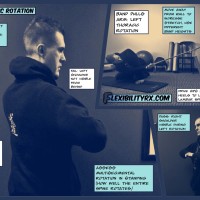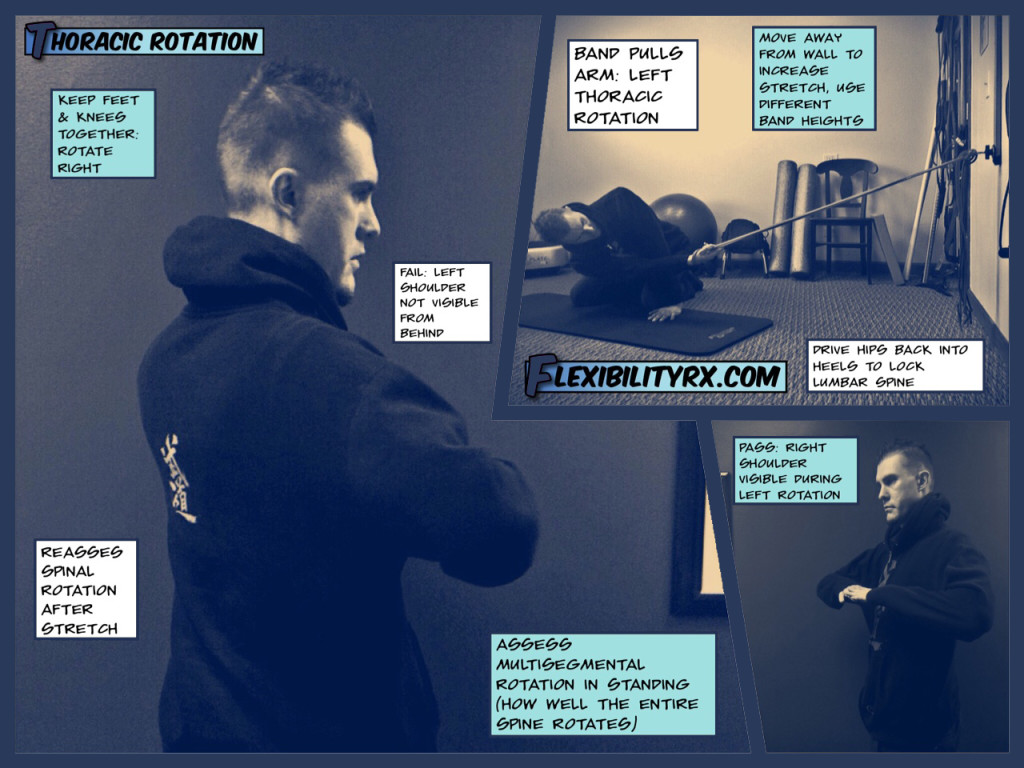
Improving Thoracic Rotation
If you have one shoulder that is more flexible than the other (asymmetry) or poor shoulder mobility – assess your thoracic rotation. If your mid back area is locked up – improve thoracic rotation – instead of just foam rolling your lats or stretching your pecs.
When I take an athlete through a Functional Movement Screen and they have an asymmetry or dysfunctional score on shoulder mobility I first address thoracic rotation. You can ‘google’ Apley Scratch Test or Shoulder Mobility (Functional Movement Screen) to gauge your shoulder mobility.
The thoracic spine is hard to isolate, when you rotate to one side each individual vertebrae contributes to what is called mutli-segmental rotation. The key to spinal rotation is movement through the thoracic spine. When the hips or thoracic spine don’t rotate the low back becomes hypermobile. This is why golfers often have low back pain – they have poor hip and thoracic spine mobility and end up rotating through the lumbar spine.
If someone has limited left rotation – improve that pattern before reassessing shoulder mobility. This stretch will allow you to reassess thoracic spine rotation without having to isolate the thoracic spine. You can perform a seated rotation test to immobilize the hips, knees, and ankles to zone in on rotation through the upper body.
This simple, “Test-Retest” template simplifies treatment/assessment and is a quick way to mobilize the thoracic spine.
Rotation and the Transverse Plane
Perry Nickelston (Stop Chasing Pain) likes to point out that, “Power Lives in the Transverse Plane.” Boxing, throwing, and swinging a club or racquet all require good thoracic spine rotation.
The rib-roll exercise is an active way to improve thoracic rotation. Pair that exercise with this passive mobilization of the rhomboid (spiral line) and thoracic spine with an active movement to lock in the movement pattern.
– Kevin Kula, “The Flexibility Coach” – Creator of FlexibilityRx™ – www.FlexibilityRx.com
Tags: anti-rotation, rhomboid stretch, rotational movement, thoracic rotation, thoracic spine, transverse plane

Leave A Reply (No comments so far)
You must be logged in to post a comment.
No comments yet